PALS - Current
 As part of our mission as a Metropolitan Research University and to build on the success of the Bullitt Lecture in Astronomy, members of our department and visiting lecturers will hold approximately one evening public lecture per month during autumn and spring semesters. Talks will last no more than one hour, and there will be a chance for questions and to talk with the speaker afterward. This is ideal for students of any age and members of the general public.
As part of our mission as a Metropolitan Research University and to build on the success of the Bullitt Lecture in Astronomy, members of our department and visiting lecturers will hold approximately one evening public lecture per month during autumn and spring semesters. Talks will last no more than one hour, and there will be a chance for questions and to talk with the speaker afterward. This is ideal for students of any age and members of the general public.
Water in the Universe
| When |
Apr 02, 2025
from 07:00 PM to 08:00 PM |
|---|---|
| Where | Monnik Beer Co 1036 E Burnett Ave, Louisville, KY 40217 |
| Contact Name | Lutz Haberzettl |
| Contact Phone | 5028521986 |
| Add event to calendar |
|
Speaker: G. Williger, University of Louisville
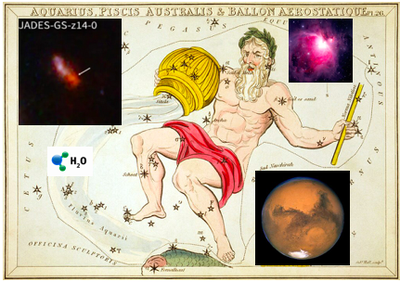 Abstract: Ancients saw water in constellations. It's actually all over the Universe, from ancient galaxies to interstellar clouds to all over our Solar System and others. It's necessary for life as we know it. Listen to details as you take in water!
Abstract: Ancients saw water in constellations. It's actually all over the Universe, from ancient galaxies to interstellar clouds to all over our Solar System and others. It's necessary for life as we know it. Listen to details as you take in water!
James Webb’s Little Red Dots
| When |
Mar 05, 2025
from 07:00 PM to 08:00 PM |
|---|---|
| Where | Monnik Beer Co 1036 E Burnett Ave, Louisville, KY 40217 |
| Contact Name | lutz.haberzettl@louisville.edu |
| Contact Phone | 5028521986 |
| Add event to calendar |
|
Speaker: Benne Holwerda, University of Louisville
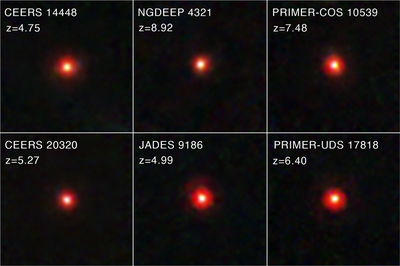 Abstract: One of the first discoveries by the James Webb Space Telescope were the bright and compact objects that appear to be at the highest redshifts. They are so numerous and bright that if they would be early galaxies made out of stars as we know them, they would be too massive and too early in the Universe's timeline.
Abstract: One of the first discoveries by the James Webb Space Telescope were the bright and compact objects that appear to be at the highest redshifts. They are so numerous and bright that if they would be early galaxies made out of stars as we know them, they would be too massive and too early in the Universe's timeline.
This population of objects has been studied intensively ever since with a consensus emerging that these host the earliest active galactic nuclei, the sites of the earliest supermassive black holes.
Mapping Dust Attenuation and Reddening Slopes in Occulting Galaxy Pair VV 191
| When |
Feb 05, 2025
from 07:00 PM to 08:00 PM |
|---|---|
| Where | Monnik Beer Co 1036 E Burnett Ave, Louisville, KY 40217 |
| Contact Name | Dr. Lutz Haberzettl |
| Add event to calendar |
|
Speaker: Clayton Robertson, Univ. of Louisville
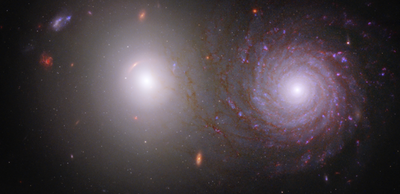 Abstract: The combination of extinction and scattering (i.e., attenuation) due to dust grains remain a critical uncertainty; for nearly all astronomical measurements, one needs to account for the dust in space. A technique to obtain extra-galactic spatially resolved attenuation measurements is to use partially overlapping -occulting- galaxy pairs: an astrophysical experiment in the optical properties of the interstellar medium that models the light of both galaxies and infers the missing light in the regions of overlap. In this talk, I present attenuation, reddening slope (RV) and color excess ratio (Eλ-V/EB-V) measurements mapped pixel-by-pixel from optical to near infrared wavelengths within the overlap of geometrically ideal occulting galaxy pair VV191. I will discuss what we learn about the dust properties of this galaxy pair and show that attenuation inferred from the Balmer decrement is twice that of the total average attenuation through the disk, decreasing with galactic radius.
Abstract: The combination of extinction and scattering (i.e., attenuation) due to dust grains remain a critical uncertainty; for nearly all astronomical measurements, one needs to account for the dust in space. A technique to obtain extra-galactic spatially resolved attenuation measurements is to use partially overlapping -occulting- galaxy pairs: an astrophysical experiment in the optical properties of the interstellar medium that models the light of both galaxies and infers the missing light in the regions of overlap. In this talk, I present attenuation, reddening slope (RV) and color excess ratio (Eλ-V/EB-V) measurements mapped pixel-by-pixel from optical to near infrared wavelengths within the overlap of geometrically ideal occulting galaxy pair VV191. I will discuss what we learn about the dust properties of this galaxy pair and show that attenuation inferred from the Balmer decrement is twice that of the total average attenuation through the disk, decreasing with galactic radius.
Sun, Moon, and Ascending: Astrology from the Perspective of an Astronomer
| When |
Dec 04, 2024
from 07:00 PM to 08:00 PM |
|---|---|
| Where | Monnik Beer Co 1036 E Burnett Ave, Louisville, KY 40217 |
| Contact Name | Dr. Lutz Haberzettl |
| Add event to calendar |
|
Speaker: Prof. C.M. Graney, Vatican Observatory
 Abstract: What does it mean for Mercury to be in retrograde? What is a Sun sign, Moon sign, and Ascending? What are Earth, Air, Fire and Water? Are we all made of star stuff, and what does that mean for Astrology?
Abstract: What does it mean for Mercury to be in retrograde? What is a Sun sign, Moon sign, and Ascending? What are Earth, Air, Fire and Water? Are we all made of star stuff, and what does that mean for Astrology?
At the Edge of a New Age: Preparing for the Future of Extragalactic Astronomy
| When |
Nov 06, 2024
from 07:00 PM to 08:00 PM |
|---|---|
| Where | Monnik Beer Co 1036 E Burnett Ave, Louisville, KY 40217 |
| Contact Name | Dr. Lutz Haberzettl |
| Add event to calendar |
|
Speaker: Kyle Cook, University of Louisville
 Abstract: Galaxies are often described as a grouping of billions and billions of stars, however, it they can also be thought of as machines for turning gas into stars. Just as other machines, galaxies can turn on or turn off their star formation in processes that are currently being heavily researched. Green valley galaxies are a population that represent the transition between star forming or not and are also the topic of much research. In this talk we will discuss the basics of star formation in extragalactic astrophysics and discuss the exciting new missions and surveys that will provide the clearest and deepest views of our Universe ever seen. Answering the questions surrounding galactic star formation will provide answers about the processes that ultimately result in new stars, new planets, and (at least in one case) new life.
Abstract: Galaxies are often described as a grouping of billions and billions of stars, however, it they can also be thought of as machines for turning gas into stars. Just as other machines, galaxies can turn on or turn off their star formation in processes that are currently being heavily researched. Green valley galaxies are a population that represent the transition between star forming or not and are also the topic of much research. In this talk we will discuss the basics of star formation in extragalactic astrophysics and discuss the exciting new missions and surveys that will provide the clearest and deepest views of our Universe ever seen. Answering the questions surrounding galactic star formation will provide answers about the processes that ultimately result in new stars, new planets, and (at least in one case) new life.
CMES, Flares & Prominences the Solar Flarewell Tour
| When |
Oct 02, 2024
from 07:00 PM to 08:00 PM |
|---|---|
| Where | Monnik Beer Co 1036 E Burnett Ave, Louisville, KY 40217 |
| Contact Name | Dr. Lutz Haberzettl |
| Contact Phone | 5028521986 |
| Add event to calendar |
|
Speaker:Matthew Nichols, University of Louisville
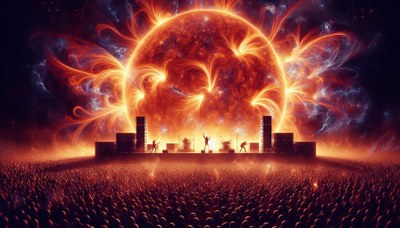 Abstract:Enjoy the solar system's greatest pyrotechnic show presented by the Sun! While the Sun generally provides a warm glow each day, occasionally it rudely belches out charged particles and radiation in the form of coronal mass ejections (cmes), flares, and prominences. Join us as we explore these phenomena, including what causes them, how to predict them, a historical perspective on recorded events, and how they may impact the habitability of planets.
Abstract:Enjoy the solar system's greatest pyrotechnic show presented by the Sun! While the Sun generally provides a warm glow each day, occasionally it rudely belches out charged particles and radiation in the form of coronal mass ejections (cmes), flares, and prominences. Join us as we explore these phenomena, including what causes them, how to predict them, a historical perspective on recorded events, and how they may impact the habitability of planets.
Image generated by Copilot
Observing in Light Polluted Skies
| When |
Sep 04, 2024
from 07:00 PM to 08:00 PM |
|---|---|
| Where | Monnik Beer Co 1036 E Burnett Ave, Louisville, KY 40217 |
| Contact Name | Lutz Haberzettl |
| Contact Phone | 5028521986 |
| Add event to calendar |
|
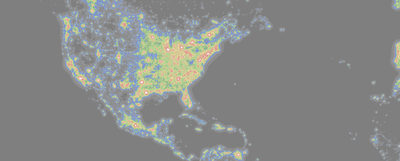 Speaker: Patrick Peak, Louisville Astronomical Society
Speaker: Patrick Peak, Louisville Astronomical Society
Abstract: In many cases people are told that observing the night sky requires a dark site well away from the light pollution of modern cities and suburbs. This is far from the truth as there are hundreds of observations to be made from almost anywhere that a telescope or binoculars can be pointed upwards. The Astronomical League has several observing programs that are well suited for light polluted locations. We will explore some of these programs and discover hundreds of things to observe from the light polluted backyard including the Moon, double stars, the Sun, Earth Orbiting Satellites and a host of objects in the night sky. You just need to know how, where and when to look!
